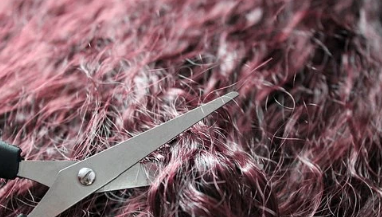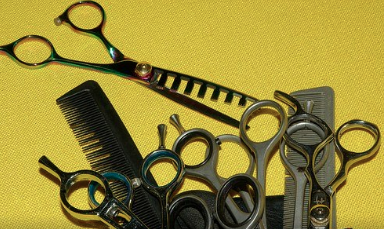“Learning to artistically cut and groom curly and over-curly hair presents
a challenge to the well-trained barber-stylist” is a quote from the Standard Textbook of Professional Barber-Styling, Milady Standard revised 1983. To do this a stylist needs to know cutting curly hair methods because losing an inch of hair can be a huge deal for someone with say, 4C hair. A fellow stylist and I had a discussion about this so I made it the subject of my post today.
Curly hair as you may know, can vary from a loose wave to tight corkscrew curl. If you remove an
inch from someone with a loose wave, the hair still has some length to it because it is: looser. If you do the same cut on someone with coily 4C hair, it looks like they got a big chop because when it curls back it seems to take a double amount. Same cut, but when it returns to coily, just to do the rounds makes it coil even more. No wonder stylists have been abused because the client wanted the hair to look good but not lose any length!

Clients who have returned to their natural hair texture are
reluctant to lose their curl. They will usually state that they want it cut “as is” or “dry”. If you are a seasoned stylist, you can look at the state of the hair and figure out pretty quickly that your cutting comb will not survive a walk through that bush. A few of them will suggest that a “good” stylist knows how to cut curly hair dry. I explain to them that I cannot guarantee a good haircut while it is curly and depending on the hair type will blow it straight to see the real length.
Call (613) 789-2179 For An Appointment If You Are In The Ottawa, Ontario Area
Clients read opinions of stylists/influencers from all over
the globe and YouTube. They offer opinions on hair they have seen which viewers take as absolutely true. In my experience, no two persons have the same texture and so what may work for one client will not work for the other, as we are all unique. I had a client tell me that her stylist always use the texturizing method of cutting her hair. This might work on someone with loose or wavy curly hair but on someone with damaged, coily hair, it looked like a ball of fuzz.
,Here are some things to know:
- cutting curly hair methods to use
- your clients hair texture and curl pattern
- condition of the hair
- style they desire, and
- length they are willing to lose.
Do not make the amateur mistake of assuming just because they asked for the style and you know all the cutting curly hair methods means they want to go that short: ask a lot of questions. Sometimes they just want the look but not the cut!
By Paula Barker, Silkie Locks Hair Design


Recent Comments